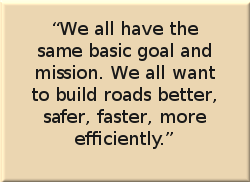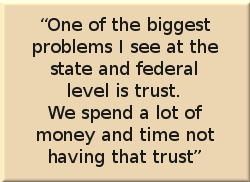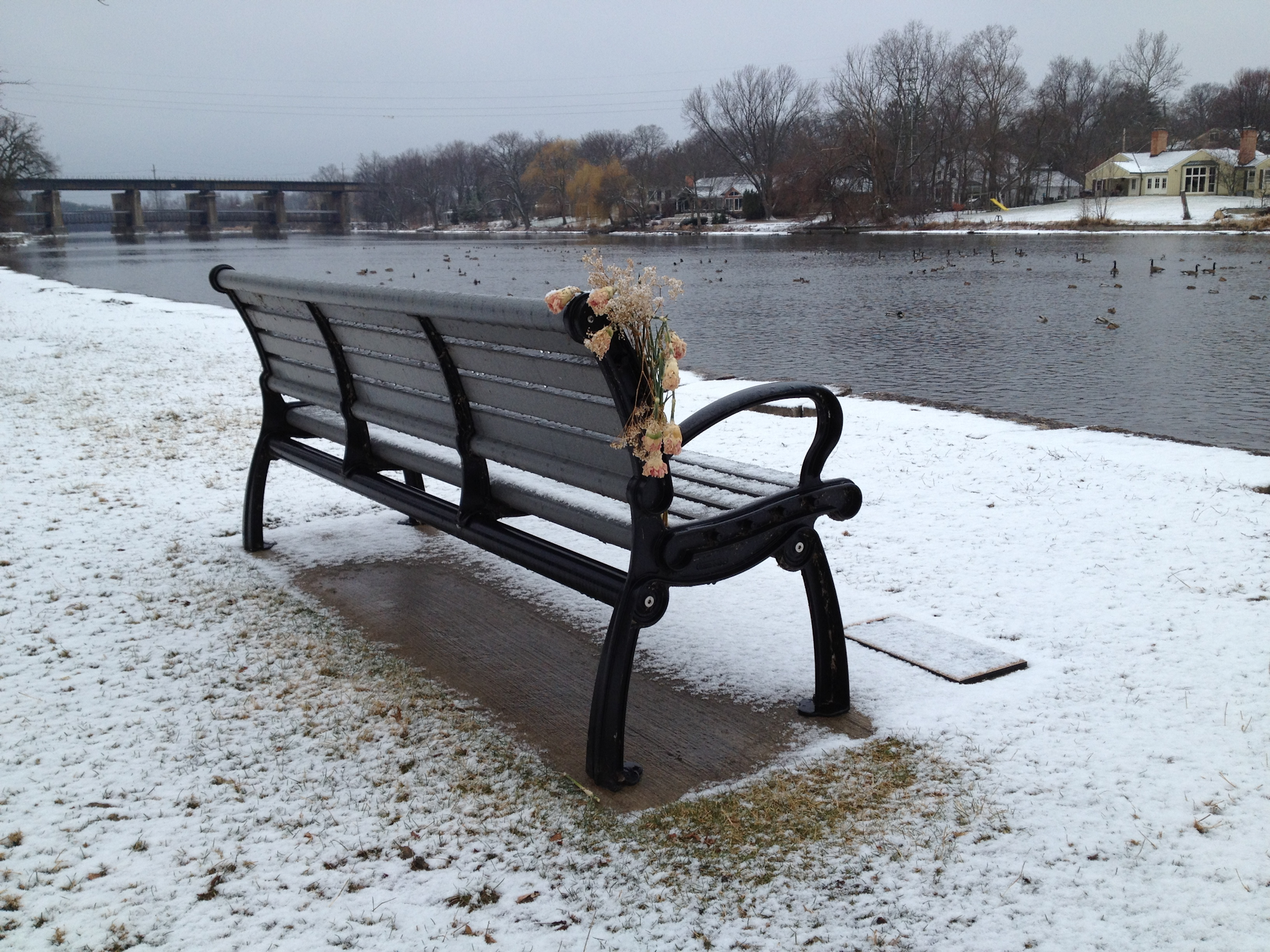
Yesterday, I had the opportunity to participate in a Peer Exchange workshop on Project Delivery as a representative for APWA. The meeting was one of four regional meetings organized and hosted by AASHTO to facilitate dialogue between federal, state, and local agencies. By encouraging discussion and building partnerships, they are hoping to provide guidance for streamlining project delivery.
I’m not sure if anything like this has been done before in our industry where all levels of government meet to work out the process of getting a job done. The workshop was exciting and yet, as you can imagine, frustrating at times as I wondered if federal and state agencies could really understand the local perspective. However, the end result was a great meeting where all of us had the chance to share the view from our level and hear and understand the experiences and ideas from other agencies. I’m not sure if it was because we had such a great facilitator or there was just a great group of people focused on making things better, but everyone showed passion and dedication to moving this initiative forward.
It’s unfortunate that more people could not have taken part so I was hoping to share my observations below and encourage anyone interested to visit the Every Day Counts (EDC) website.
The day started out with a welcome from Peter Plumeau, the facilitator, and representatives from the partnering agencies: NACE, APWA, and AASHTO. Everyone introduced themselves and shared some thoughts about what they hoped to accomplish. Then Victoria Peters, special assistant to the deputy administrator of FHWA, explained the EDC program.
Every Day Counts Program
I won’t go into the details of this session because you can read all about it at the EDC website. The basic idea is that EDC was launched in November 2009 to identify and deploy readily available innovation and operational changes that would enable us to become faster, better, and smarter. Peters emphasized that the program was intended to work within existing laws. She quickly went through the program’s sixteen initiatives including ten that would shorten project deliver and six that are categorized as technical innovations. She explained how state implementation teams established at the state DOTs have developed final action plans to carry out these initiatives. And she mentioned there will be 2011 discretionary grant programs highlighting EDC initiatives. Peters also encouraged people to visit the EDC site and submit more ideas in their “innovation box.”

Federal Programs and Project Delivery Initiatives
The next panel presented several programs already in place that can be used to shorten project delivery. These included programmatic agreements, Construction Manager/General Contractor or CM/GC, and flexibility in utility accommodation and relocation.
The Wisconsin Factor
Over lunch Daniel Fedderly, executive director of the Wisconsin County Highway Association, shared with the group some of the ideas Wisconsin has used to shorten project delivery. Wisconsin seems unique in that the counties in that state take care of all the county and state roads. (One county engineer told me later in the day his county has its own hot mix plant!) So perhaps it’s this extensive history of cooperation between local
and state government that provided the impetus for Wisconsin agencies to begin this type of effort many years ago. Fedderly explained how they pre-scope projects to help discover any red-flags or additional or alternate funding sources early in the process. He also discussed the use of project exclusions and project tiering – a method of recognizing an overlay does not require the same level of scrutiny that a new bridge construction project might require.
Barriers and Obstacles
After lunch we broke into four groups that included members from each agency or organization. First we identified major barriers or obstacles to achieving our goal of shortening project delivery. Although there were many identified, most fell into the following basic categories or issues:
- The perception of high risk when there isn’t any
- The failure to focus on what matters
- The failure to be consistent
- The lack of federal flexibility
- The number and control of regulations
- The lack of education of people at all levels – those reviewing at the state and federal level and those working at the local level
- Lack of trust between agencies and an “us vs. them” attitude
Recommendations
After we highlighted the issues or problems present in the current system, we moved on to think of recommendations or solutions. Below are the highlights of our findings.
- Form partnerships – form early and reinforce often
- Move beyond us and them and focus on a win/win perspective
- Pre-scope but understand changes will need to be accommodated if necessary
- Ask questions and manage up through all levels of government
- Educate – Educate – Educate!
- Scale the process to the needs – adopt a risk-based approach
- Build on EDC – provide groundwork for structural changes
- Keep the momentum going
- Enhance and use existing resources like LTAP to promote and deliver these solutions
- Develop a forum and other communication opportunities on the EDC website
- Host state, regional, and national dialogues between all partners
- Make use of a Federal Fund Exchange Program similar to that offered by the Kansas DOT
Summary of the Day
Overall, my final impression was that we are on the right track. We learned that many states have already been working in this direction and using these initiatives for some time. At our sessions representatives from these states were able to share positive outcomes and success stories. Now, it just seems to be a matter of working with the other states and locals to incorporate these ideas and recommendations within their own process. Plumeau said there will be two more regional workshops held over the next month or so then his group will summarize the results of all meetings and send out a report.
Plumeau also pointed out near the end of the day that almost all of the issues we identified and solutions we came up with could be applied to just about any industry or situation. Based on his observation, I have to think it’s obviously not just a transportation issue – it’s more of a people issue. And this seems to emphasize our need to continue building the partnerships and dialogue that has been started with these summits.

